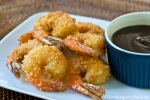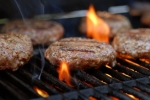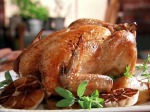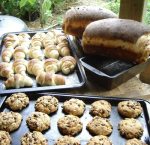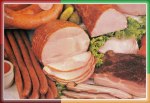Indian cooking has its own set of cooking techniques, methods, and equipments, like any other cuisine of the world, and these also differ from region to region. The cooking methods here are as versatile as our language. In general terms, cookery is the art of preparing food by the application of heat. The methods of cookery involve gentle to intense heat, wet or dry, and vary in application from natural fires to complicated technological instruments.
A variety of food items are cooked, such as tough meats and starchy vegetables, which makes them easier to eat and also improves the taste. There are various reasons why we cook our food. The basic ones are:
- Cooking makes food easy to digest.
- Cooking improves the appearance in flavour, texture and colour
- Cooking helps in preserving the food, by making the food safe and sterile
The choice of the most suitable method of cooking is fundamental to achieving the most palatable results. The methods of cooking can be classified according to the method of heat transfer to the food: conduction, convection, or radiation. I have some listed some popular and common Indian Cooking techniques; however cooking techniques differ by region.
Tandoori cooking is one of the highlights of Indian cuisine. The Indian tandoor is a clay oven that can reach temperatures as high as 5500F. It looks like a rounded bee-hive. Tandoori is a hotter and quicker form of cooking than the western barbecue. It is used to make naan breads, kebabs, tandoori meats and stuffed rotis and paranthas.
A traditional tandoori oven must be seasoned. A paste is made of spinach and applied to the inner surface and left to dry. Paste of mustard oil, buttermilk, jaggery and salt is applied over the spinach. A small fire is lit and the temperature allowed to rise gradually until the emulsion peels away from the walls of the tandoor. Repeat for a few times. A brine solution is sprinkled on the inner walls to facilitate the sticking of breads like naans to the sides. To know if the oven temperature is optimum, try and stick a naan to the sides, if it falls off, the oven is not hot enough. Meats and Paneer are marinated; the kebabs are seasoned with herbs and spices. They are also basted with ghee to withstand the drying of meats which happens at such high temperatures. Meats, Kebabs and Naan come out perfect in a Tandoor.
This process reflects the ingenuity of the Indian chefs. They virtually created a baking oven and a pressure cooker with very simple ideas. Food was partially cooked beforehand. They then put this in a pot and sealed the cover with atta (dough) to capture the moisture within the food as it cooked tenderly and slowly over a charcoal fire. Coals were also placed on the lid to ensure even cooking.
They then added their main ingredients like rice or vegetables or meats or all three with spices, herbs, seasonin
gs, saffron, and tomato and let the food continue to cook in its own steam. The entire dish retained all its flavour and aroma and the slow cooking created perfect foods fit for their emperors and kings.
The Indian Biryani is one of the most popular Dum dishes. Dum means “to steam”.
a) Shallow frying & b) Deep frying
Baghar/Tadka/Chonk (Instant seasonings/Tempering):
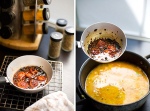
The goal of this technique is to add flavour to a dish very quickly. Spices and herbs are added to hot oil/ghee. Hot oil extracts and retains the aroma, essence and flavour of the spices and herbs. This tempering is done in two ways.
- As the first step in the cooking process, before adding the rice, vegetables or lentils.
- Pouring the tempered oil over dal. Spices and herbs cooked this way retain and enhance their flavours.
A common recipe for baghar is to add either cumin or mustard seeds in hot oil and let them sizzle for a few seconds then add a pinch of asafoetida and red chilli powder.
Uses – Pour over cooked lentils that have already been boiled with ginger and turmeric, over steamed vegetables and over yogurt raitas and rice
Grilling:
Grilling is cooking over glowing fire. The food is supported on an iron grid over the fire, or between electrically heated grill bars. The grill bars are brushed with oil to prevent food sticking and can be heated by charcoal, coke, gas or electricity. The food is cooked on both sides to give the distinctive flavour of grilling.
Another method of cooking food by dry heat is called roasting. Roasting is cooking on a glowing fire. While roasting, the food is put directly on the hot tava, hot stand or hot fire and cooked. For e.g., brinjals, potatoes, maize etc.
Baking is a method in which food is placed inside a closed box called an oven. The inside the oven is made hot by fire or electricity. The food gets cooked by hot air. This is among the lesser used methods in Indian kitchens.
Glowing charcoal is placed in a small pot, which is ten put in a bigger pot. Cooked meats are placed around this. Dry spices and ghee are poured on top of the coals and a lid is quickly placed over the larger pot. These meats imbibe the fresh smoke taste of ghee and cumin. It is very popular in the cold months of North India, especially in the desert areas.


